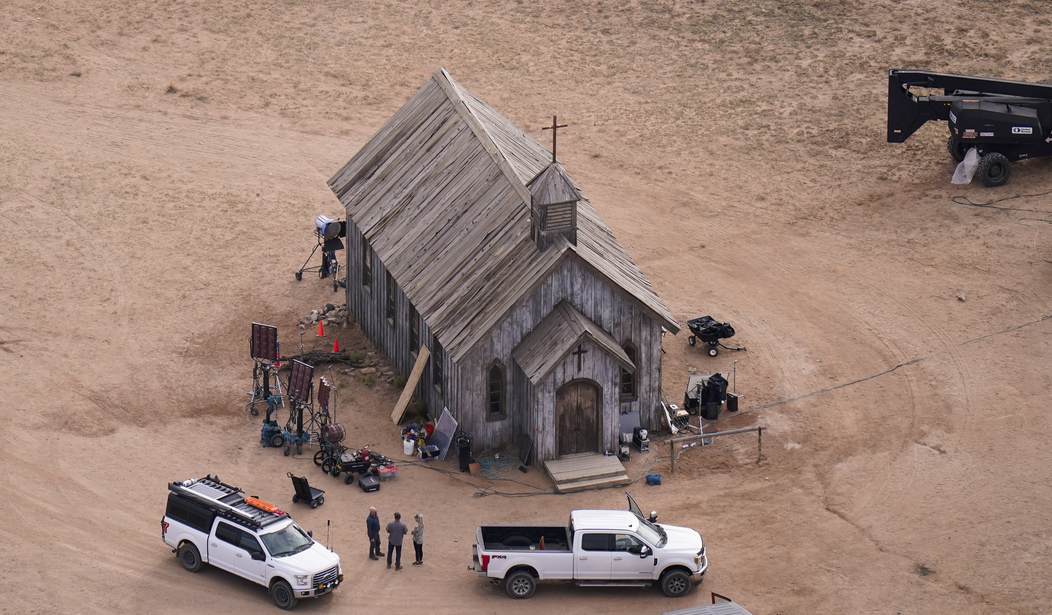The criminal investigation into the shooting death of cinematographer Halyna Hutchins on the set of the movie “Rust” is still ongoing, but five months after a gun in actor Alec Baldwin’s hands discharged and killed Hutchins and wounded movie director Joel Souza, New Mexico’s Occupational Health and Safety Bureau has levied the heaviest fine possible against the movie’s producers.
The nearly $140,000 fine was issued as a result of “a set of obvious hazards to employees regarding the use of firearms and management’s failure to act upon those obvious hazards,” according to one OHSB official, who says that the agency documented numerous safety violations on set.
The new occupational safety report confirms that a large-caliber revolver was handed to Baldwin by an assistant director, David Halls, without consulting with on-set weapons specialists during or after the gun was loaded. Regulators note that Halls also served as safety coordinator and that he was present and witnessed two accidental discharges of rifles on set, and that he and other managers who knew of the misfires took no investigative, corrective or disciplinary action. Crew members expressed surprise and discomfort.
“The Safety Coordinator was present on set and took no direct action to address safety concerns,” the report states. “Management was provided with multiple opportunities to take corrective actions and chose not to do so. As a result of these failures, Director Joel Souza and cinematographer Halyna Hutchins were severely injured. Halyna Hutchins succumbed to her injuries.”
Specifically, the report found major issues with how the firearms used on set were treated, with OSHB placing most of the blame on the movie’s producers.
Investigators found production managers placed tight limits on resources for a small team that controlled weapons on set and failed to address concerns about a shotgun left unattended twice.
Armorer Hannah Gutierrez Reed, the daughter of a sharpshooter and consultant to film productions, was limited to eight paid days as an armorer to oversee weapons and training, and was assigned otherwise to lighter duties as a props assistant. As her time as an armorer ran out, Gutierrez Reed warned a manager and was rebuffed.
Safety investigators also note that the production company did not develop a process to ensure live rounds of ammunition were not brought on set, in violation of industry safety protocols. Safety meetings were conducted, but not every day weapons were used, as required.
The OSHB findings will obviously be a big part of the evidence presented by Hutchins’ family in their lawsuit against Baldwin and other producers for the film, especially since the report found that producers “willfully” ignored proper procedures. James Kenney, who’s New Mexico’s Secretary of the Environment, said in a video release on Wednesday that “there were several management failures and more than sufficient evidence that if standard industry practices were followed, the fatal shooting of Halyna Hutchins and the serious injury to Joel Souza would not have occurred.”
The guidelines in place by OSHA require live ammo “never to be used nor brought onto any studio lot,” and that those on set “refrain from pointing a firearm to anyone” except after consulting a safety representative. “By failing these practices, an avoidable loss of life occurred,” read a release from the department. The department said its investigation included 14 interviews and the review of 566 documents.
According to the report, a safety representative was present on set but took “no direct action to address safety concerns.” It’s unclear whether that safety representative was present when the gun in Baldwin’s hands discharged, firing the round that killed Hutchins and wounded Souza; an act that Baldwin insists happened without him pulling the trigger of the revolver. As has been previously reported however, it’s possible that Baldwin caused the gun to discharge when he released the hammer of the revolver, causing the firing pin to strike the round that was chambered.
Whether or not criminal charges will ultimately be filed in this case is going to be up to the district attorney in Santa Fe, New Mexico, but the OHSB report offers a damning look at a production that appeared to give little thought to firearms safety on set, to the point of completely ignoring standard industry practices. For their part, the producers of “Rust” say they plan on appealing the agency’s findings, but in the months since the shooting took place we’ve seen little to no evidence that would contradict the account laid out by the state agency. All of the information we have to date suggests that this was a low-budget movie on a tight shooting schedule with many inexperienced production members and a production team that failed to ensure that the guns on set were treated like the deadly weapons they are, which resulted in a tragedy that was entirely preventable.









